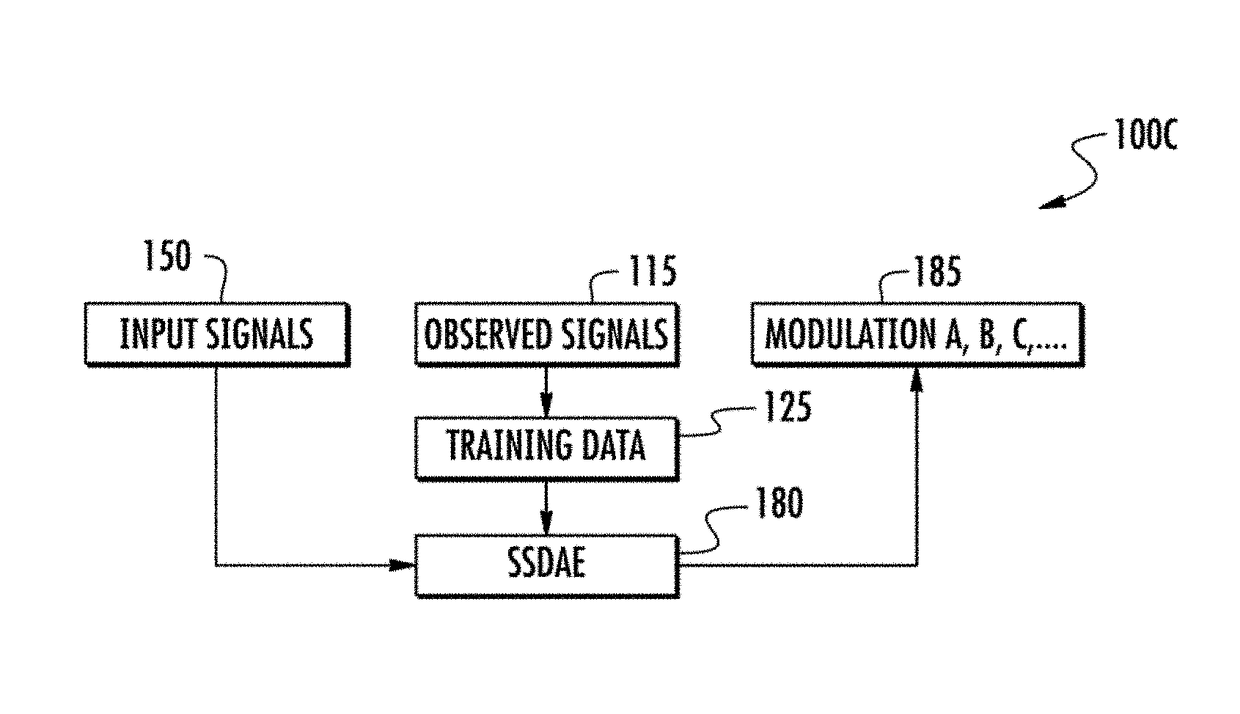Biologically inspired methods and systems for automatically determining the modulation types of radio signals using stacked de-noising autoencoders
a radio signal and autoencoder technology, applied in the field of biological inspiration classification of input signals, can solve the problems of difficult blind identification of signal modulation, difficult task, and general inability to classify
- Summary
- Abstract
- Description
- Claims
- Application Information
AI Technical Summary
Benefits of technology
Problems solved by technology
Method used
Image
Examples
Embodiment Construction
[0025]According to an illustrative embodiment, a method, device and system are provided for automatically classifying feature types of input signals having unknown feature types. Features associated with a plurality of different observed signals having respective different class types are learned by a neural network. The neural network then recognizes features of the input signals having unknown class types that at least partially match at least some of the features associated with the plurality of different observed signals having respective different known class types. The neural network determines probabilities that each of the input signals has each of the known modulation types based on strengths of matches between the recognized features of the input signals and the features associated with the plurality of different observed signals. The neural network classifies each of the input signals as having one of the respective different known class types based on a highest determine...
PUM
 Login to View More
Login to View More Abstract
Description
Claims
Application Information
 Login to View More
Login to View More - R&D
- Intellectual Property
- Life Sciences
- Materials
- Tech Scout
- Unparalleled Data Quality
- Higher Quality Content
- 60% Fewer Hallucinations
Browse by: Latest US Patents, China's latest patents, Technical Efficacy Thesaurus, Application Domain, Technology Topic, Popular Technical Reports.
© 2025 PatSnap. All rights reserved.Legal|Privacy policy|Modern Slavery Act Transparency Statement|Sitemap|About US| Contact US: help@patsnap.com



